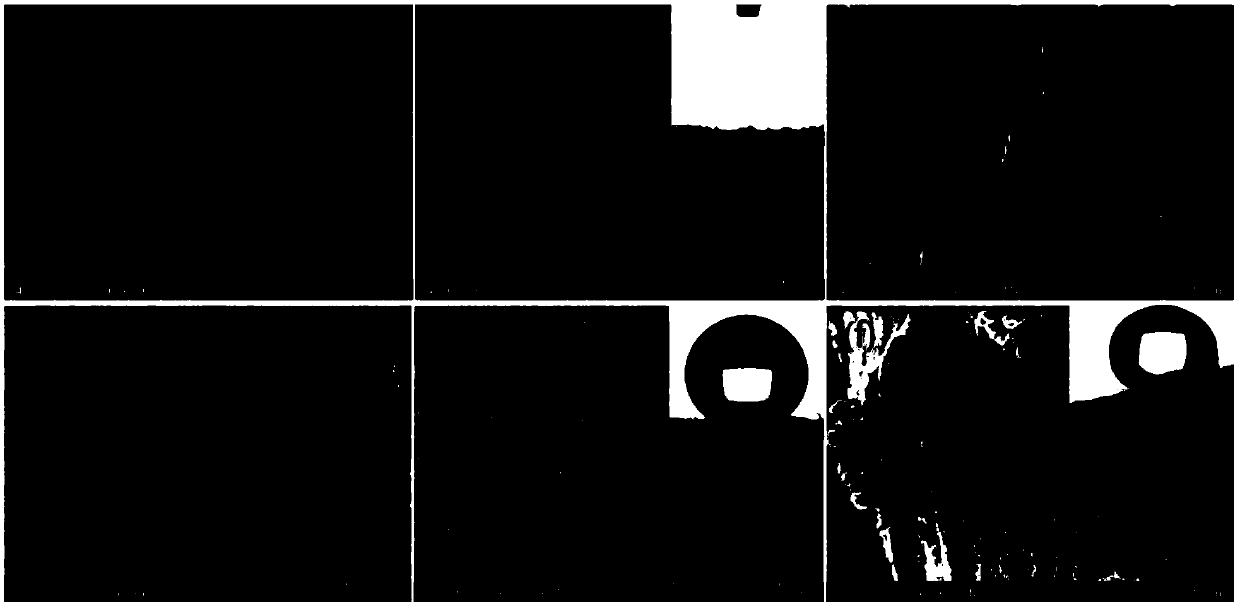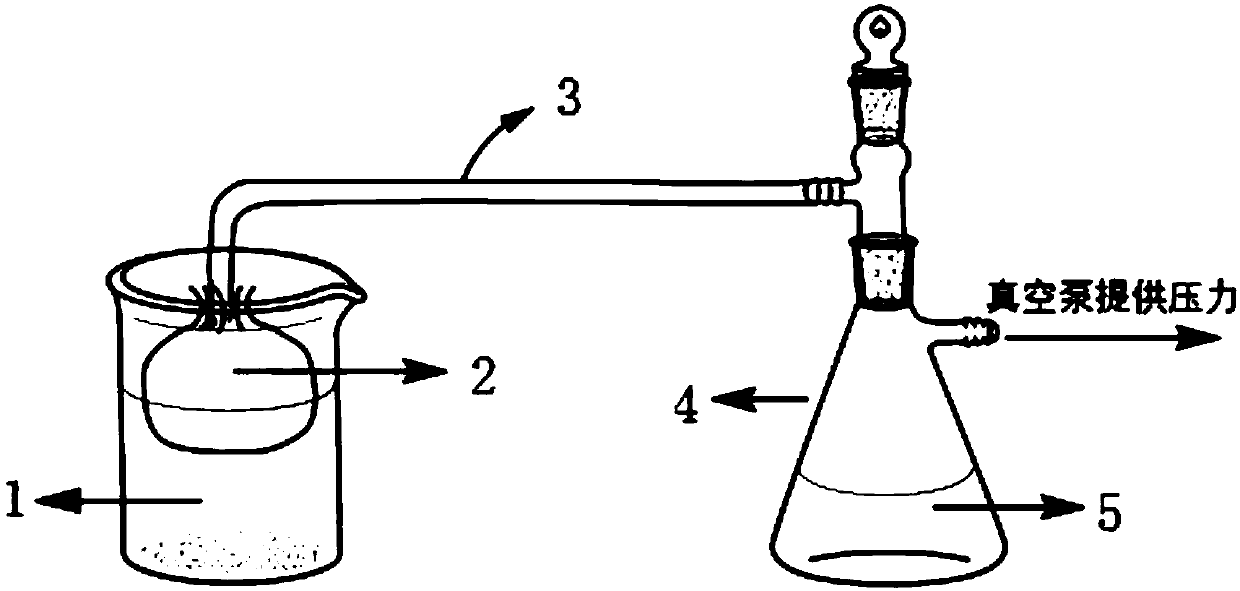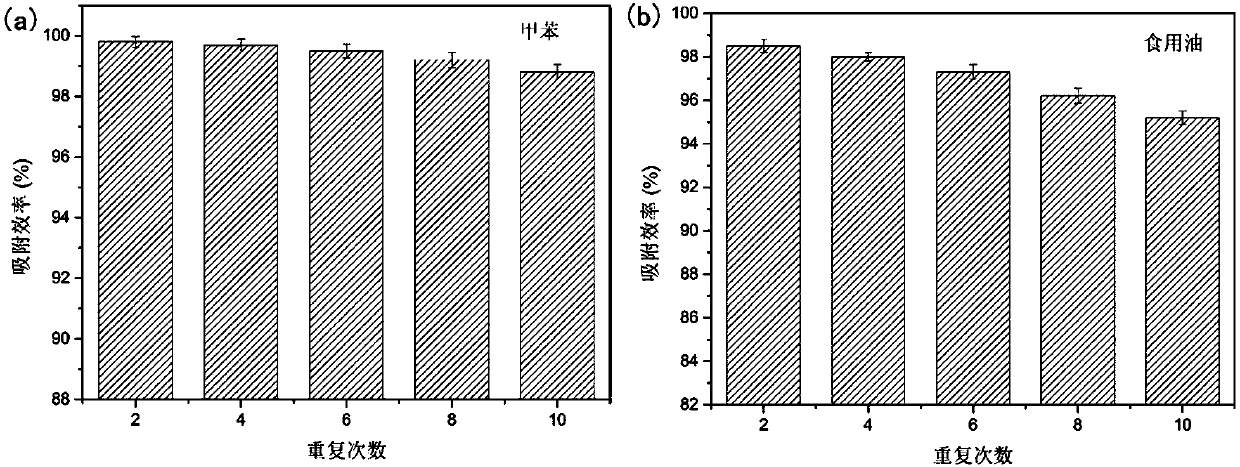Lyophobic cotton fabric as well as preparation method and application thereof
A technology of cotton fabric and water cotton, applied in the field of hydrophobic cotton fabric and its preparation, can solve the problems of complex preparation process, expensive raw materials, difficult to degrade, etc., and achieve the effect of simple preparation method, low raw material cost and high separation efficiency
- Summary
- Abstract
- Description
- Claims
- Application Information
AI Technical Summary
Problems solved by technology
Method used
Image
Examples
Embodiment 1
[0039] 4×4cm 2 Immerse the cotton fabric in the aqueous solution (100ml), add 1.25g of ferrous sulfate heptahydrate, then place it in a water bath at 75°C, keep it warm for 10min, add 0.15g of tea polyphenols, without adjusting the pH value, keep warm and stir gently for 30min (stirring speed is about 100 rpm), take out the cotton fabric, wash it with deionized water, and place it in an oven at 75° C. to dry for 25 minutes to obtain a superhydrophobic cotton fabric.
[0040] figure 1 It is the scanning electron microscope picture of the superhydrophobic cotton fabric prepared in this embodiment. Figure a-c is the high-magnification scanning electron microscope picture of the original cotton fabric. It can be clearly seen from the figure that the surface of the original cotton fiber is very smooth, almost without obvious convex and the contact angle to water is 0°; d-f are high-magnification scanning electron microscope images of the finished cotton fabric. It can be clearly s...
Embodiment 2
[0042] 4×4cm 2 Immerse the cotton fabric in the aqueous solution (100 ml), add 3g of ferrous sulfate heptahydrate, then place it in a water bath at 75°C, keep it warm for 5min, add 0.2g of chlorogenic acid, phosphate buffer or Tris-HCl buffer to adjust The pH value is about 3, keep warm and gently stir for 120 minutes (stirring speed is about 300 rpm), take out the cotton fabric, wash it with deionized water, and dry it in an oven at 60°C for 30 minutes to obtain a superhydrophobic cotton fabric.
[0043] Test the hydrophobic performance of the superhydrophobic cotton fabric obtained above under various extreme environmental conditions, the specific method is as follows:
[0044] The obtained superhydrophobic cotton fabric is soaked in different liquids and measures its contact angle after 12h; Or
[0045] Measure the contact angle of the superhydrophobic cotton fabric after being treated at 200°C or -196°C for 1 hour; or
[0046] Measure its contact angle after irradiating th...
Embodiment 3
[0054] 4×4cm 2 Immerse the cotton fabric in the aqueous solution (100 ml), add 1g of ferrous sulfate heptahydrate, then place it in a water bath at 60°C, keep it warm for 7min, add 0.1g of ferulic acid, phosphate buffer or Tris-HCl buffer to adjust The pH value is about 5, keep warm and gently stir for 60 minutes (stirring speed is about 250 rpm), take out the cotton fabric, wash it with deionized water, and dry it in an oven at 75°C for 15 minutes to obtain a superhydrophobic cotton fabric.
PUM
| Property | Measurement | Unit |
|---|---|---|
| separation | aaaaa | aaaaa |
| separation | aaaaa | aaaaa |
| separation | aaaaa | aaaaa |
Abstract
Description
Claims
Application Information
 Login to View More
Login to View More - R&D
- Intellectual Property
- Life Sciences
- Materials
- Tech Scout
- Unparalleled Data Quality
- Higher Quality Content
- 60% Fewer Hallucinations
Browse by: Latest US Patents, China's latest patents, Technical Efficacy Thesaurus, Application Domain, Technology Topic, Popular Technical Reports.
© 2025 PatSnap. All rights reserved.Legal|Privacy policy|Modern Slavery Act Transparency Statement|Sitemap|About US| Contact US: help@patsnap.com



